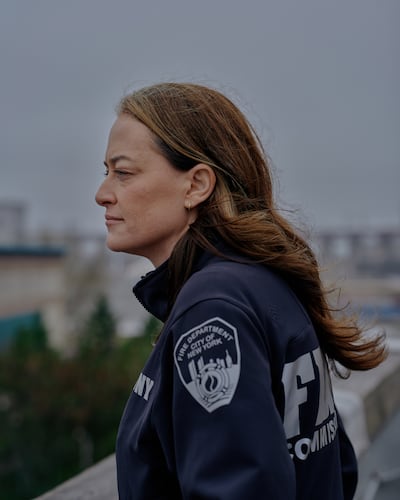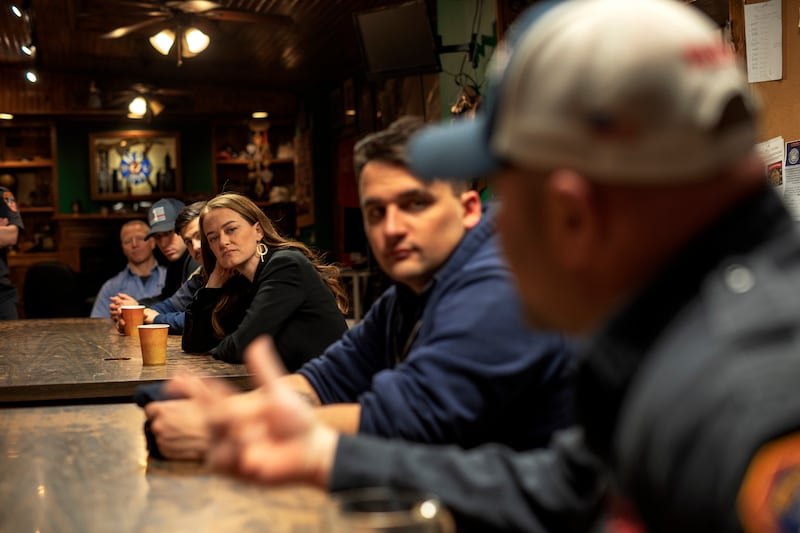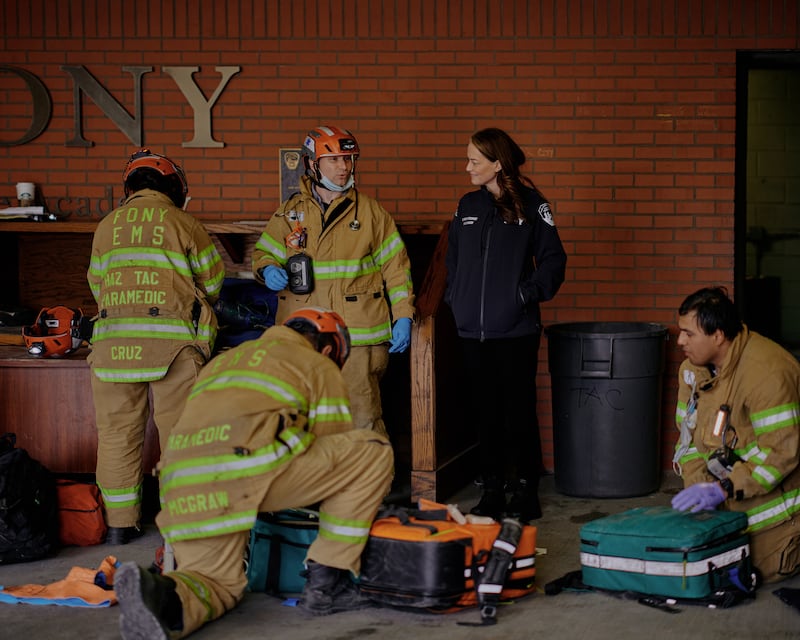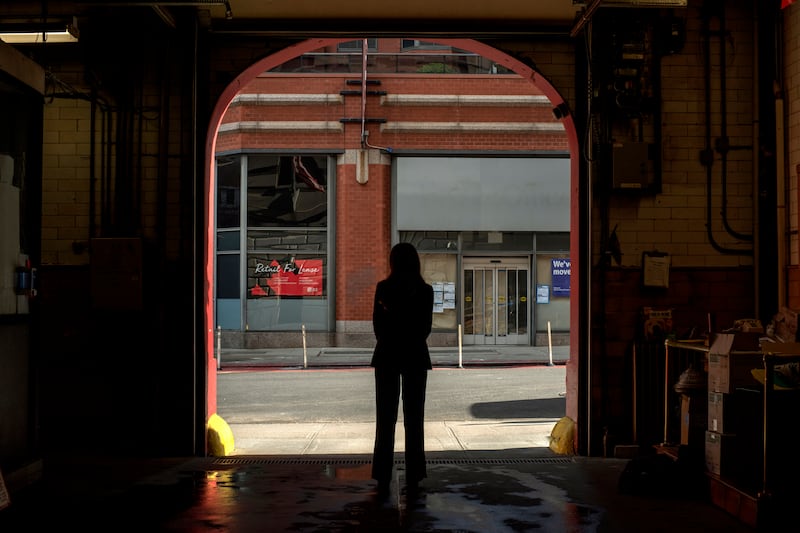When women were first hired by the New York Fire Department in the early 1980s, no red carpet led to the red doors.
As Suzanne Daley reported in the Times, one pioneer woman firefighter recounted that the men in her company “slammed doors in her face, swore at her, put firecrackers under her bed and once tried to lock her in a kitchen they had filled with tear gas”. Some women found urine in their boots. One was attacked with a knife.
No knives have been drawn since 40-year-old Laura Kavanagh became the city’s first woman fire commissioner in October, but charges of back-stabbing have flown.
Three months into her administration, she faced a mutiny by several of her male staff chiefs, giving one retired woman firefighter I talked to flashbacks to reports of those early days of vitriol. Progress has been made, but the paternal, parochial 1950s mindset has never really gone away in the overwhelmingly white, male, tradition-bound hierarchy, some women firefighters tell me.
Calls grow louder for Europe to deploy its ‘Big Bazooka’ in tariff negotiations
Palestinians say Occupied Territories Bill would give them hope: ‘We are really in a big cage’
Humiliation of tens of thousands of immigrants in a Florida processing centre surrounded by alligators will generate a backlash
‘Everyone is digging for gold now’: Desperate Syrians resort to scouring ancient sites
Sitting in her office in Brooklyn, wearing a flame-red jacket and black pants, Kavanagh says that growing up in a “large and complicated” clan and running a department with relatives cascading through the ranks make the turmoil she faces feel like a family feud, in a family with a life-or-death mission.
“It fits with my own family, for better or worse,” she says. “Sometimes there’s yelling and sometimes it’s not easy.”
A San Francisco native – her mother was a teacher, her father worked at the phone company – Kavanagh has an Irish-Italian background, mirroring her department’s traditional DNA. She has a small Celtic knot tattoo on her left wrist peeking out from under her white Apple Watch band.
If Hollywood filmmakers were looking to cast a big-city woman fire commissioner, they would conjure Kavanagh – tall, athletic, with blue eyes, an auburn mane and a cleft in her chin.

Kavanagh does not blame misogyny for the firestorm. She says that some of the men just need to adjust to how she “looks and seems” – certainly, the commissioner’s SUV has never had an extra pair of high heels in the back seat before. “Change is just hard, period,” she says.
But her supporters think otherwise.
“She disrupted historical gender roles,” says Letitia James, the New York state attorney general. “She did it by tearing off the Band-Aid, and historic wounds were exposed.”
Her critics, however, see a young commissioner in over her head, stepping on toes without thinking of the consequences.
Even though she has been at fire headquarters since 2014 – as first deputy commissioner since 2018 and acting commissioner since February 2022 – she is treading treacherous ground, with fault lines of class, sex and age in a department with more than 17,000 employees and a $2 billion (€1.8 billion) budget.
We don’t get to pick the emergency or the calamity. We just respond – that’s the name of the game
— Dellon Morgan
The drama began on February 3rd, when Kavanagh delegated to her chief of staff the demotion of three three-star staff chiefs working at headquarters – Michael Gala, Fred Schaaf and Joseph Jardin – while she was in a meeting the rest of her leadership team. (That the chief of staff, Luis Martinez, is an ex-cop rankled many in the fire department, given the storied rivalry between the agencies.) The three men, in their early 60s – they were in the group of 27 staff chiefs at headquarters – are deputy chiefs now, back in the field.
Kavanagh did not get into detail about the reasons for the demotions, although an aide says the commissioner wanted to shake things up and send a message that she didn’t want to play “the same old game”.

Despite Kavanagh’s reticence, there may be some clues to what that game is. Gala wrote a public letter in 2011 complaining that “the frenzy to diversify” the department would cause “future ruination”. The New York Daily News reported that as Queens borough commander, Schaaf resisted disciplining some firefighters after allegations of racism at one of his firehouses. The paper also reported that Jardin was the subject of a series of complaints with the city’s Office of Equal Employment Opportunity over his management style.
Days after the demotions, John Hodgens, the five-star chief of department and its highest-ranking uniformed official, and John Esposito, the chief of fire operations, asked to be demoted to civil service ranks.
Allies of Hodgens and Esposito – union representatives said the two men declined to be interviewed – said the chiefs felt humiliated because they learned about the demotions only when one of the demoted men texted someone at the big meeting Kavanagh, after she had left.
Hodgens, in particular, is a surprising adversary, since he had at times supported Kavanagh’s quest for the top job, and Kavanagh promoted both men to their current posts.
Further inflaming matters, someone taped the meeting and leaked it to The Daily News – a breach of department protocols that is being investigated. On the tape, the paper reported, Kavanagh can be heard complaining that she had got little response to her requests for innovative suggestions, while chiefs can be heard asking about vacation time and the use of personal cars – making them look like entitled crybabies and the commissioner look like a forward-looking leader. A lawsuit from three chiefs, two of whom Kavanagh demoted, accuses her camp of leaking the tape.
I came here to do the right thing by the department and it’s going to require some hard decisions and some pushing
— Laura Kavanagh
Meanwhile, seven staff chiefs have joined Hodgens and Esposito in solidarity, asking to be demoted. Kavanagh, trying to steady the ship, has not approved any of the requests.
James McCarthy, president of the Uniformed Fire Officers Association, which represents officers above the rank and file, says the uprising is not waning. He says the chiefs and deputy chiefs involved do not see themselves as mutineers but more as principled resisters, “like Archibald Cox” during Watergate.
McCarthy calls it “disingenuous” of Kavanagh’s supporters to label her critics in the department as misogynists resistant to change, given that his union supported a black woman, Terryl Brown, the department’s chief legal counsel, for the commissioner job. Kavanagh ousted Brown about a month ago.
Kavanagh believes she has support among the rank-and-file firefighters and emergency medical technicians.
Some outside the top ranks have little patience for the chiefs’ complaints. “A soap opera in a crystal palace,” an Emergency Medical Services union official calls the controversy. “Chiefs sucking their thumbs and stamping their feet,” a firefighter says.
Kavanagh rejected the chiefs’ claims that the public, and firefighters, are in jeopardy without their decades of experience. Those claims did not seem to be true when a call came in about a building collapse in Brooklyn while she and I visited Rescue 1 in midtown Manhattan on Tuesday. Firefighters piled into a truck in the blink of an eye.
We lost people that we love in the line of duty. We go to tragic events, where people have died. I feel quite comfortable showing my emotions in that moment
— Laura Kavanagh
“We don’t get to pick the emergency or the calamity. We just respond – that’s the name of the game,” says Dellon Morgan, a Brooklyn fire captain and former president of the Vulcan Society, an organisation of black firefighters. He finds the opposition to Kavanagh ego-driven: “Every step is being challenged, even the smallest moves, and it is just not necessary.”
Kavanagh’s friends say the uprising has upset her, but her reserved manner cloaks that. She tells me that she has a “thick skin” and doesn’t let things such as boos at a promotion ceremony in February affect her.
“I came here to do the right thing by the department and it’s going to require some hard decisions and some pushing,” she says. “It will be in the rear-view mirror someday.”
When I ask the reason for the trio of demotions that sparked a revolt, she says she had “to simply get our headcount where it needed to be”.
But clearly it was about more than headcount; it was about drawing a line. Some of Kavanagh’s supporters wonder if the move was too precipitous. Others, however, note that subtlety has been tried before, and chiefs have stubbornly resisted.
Two lawsuits filed by chiefs, however, seem personal. The first, dismissed out of hand by US district judge Rachel Kovner, claimed their demotions caused “a grave risk” to the city and firefighters. A second suit accused the commissioner of ageism.

Regina Wilson, a firefighter who is president of the Vulcan Society, says she was not sorry to see the three chiefs demoted. “Black firefighters are not crying no river for them,” she says.
More strikingly, she thinks Kavanagh should not have got the top job in the first place. In her opinion, Kavanagh, as deputy commissioner and acting commissioner, did not do enough to diversify the department or make firehouses less hostile toward women and black firefighters.
Does Kavanagh agree that racism is still a problem in the department?
“Yes, very much so,” she says.
The mission is worth fighting for and nothing can change my mind about that
— Laura Kavanagh
Has it diversified too slowly?
“I think you’re seeing that diversity come on to the job,” she says. “It will be a long time until it’s percolated through all of the ranks. That’s just a reality of civil service.”
Curiously, given the opposition she has faced in her five months on the job, her thesis for her master’s of public administration at Columbia, titled The Poisoned Water-Cooler: Workplace Gossip as a Lever of Power, examined the role of gossip and rumour in organisations that are clinging to the status quo and the harmful effect that has on women leaders.

It was at Columbia, which hosts the FDNY (Fire Department of New York) Officers Management Institute, that she met some of her closest advisers, whom her detractors call “the Columbia cabal”, saying that her inner circle isolates her too much from the chiefs.
As the first woman in charge, she says, she gets “a lot of different advice like, ‘Oh, you should be tough’ or ‘You should never show your feeling.’ I just think that’s not right.” She explains that “there are really awful moments in the fire department”.
“We lost people that we love in the line of duty. We go to tragic events, where people have died. I feel quite comfortable showing my emotions in that moment,” Kavanagh says.
Working in a hypermasculine culture, she wants to get rid of the toxic element that leads to bullying and cruelty. “Bullying of any kind is completely off the table,” she said bluntly in the leaked tape of her meeting the staff chiefs. “I will not tolerate it.”
But she also sees the need to nurture the alpha streak among all firefighters that makes them willing to jump into a fire and dangle out of 20th-story windows.
Her broader goals are increasing safety and reducing fire deaths, eliminating dangers of lithium ion batteries for electric bikes and getting state-of-the-art respirator technology.
Outside her office is a wall full of framed photos of all of New York’s fire commissioners. There are 33 men, the earliest bearded and mustachioed from a century and a half ago – and at the very end, a smiling Laura Kavanagh.
“I love this place,” she says. “The mission is worth fighting for and nothing can change my mind about that.” – This article originally appeared in The New York Times.














